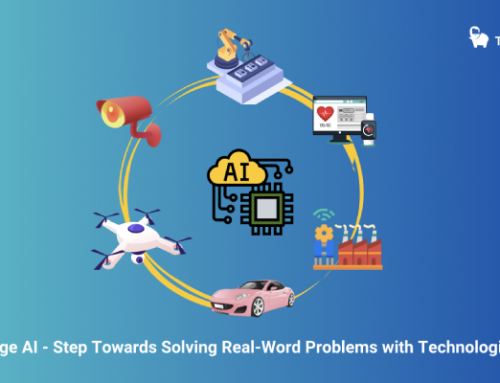
Photograph by Roberto Frankenberg for Fortune
How A.I. Is Finding New Cures in Old Drugs
Pharma startups like Pharnext are deploying machine learning to search for new therapeutic uses for “off patent” medications.By Tiernan Ray
In the elegant quiet of the café at the Church of Sweden, a narrow Gothic-style building in Midtown Manhattan, Daniel Cohen is taking a break from explaining genetics. He moves toward the creaky piano positioned near the front door, sits down, and plays a flowing, flawless rendition of “Over the Rainbow.”
If human biology is the scientific equivalent of a complicated score, Cohen has learned how to navigate it like a virtuoso. Cohen was the driving force behind Généthon, the French laboratory that in December 1993 produced the first-ever “map” of the human genome. He essentially introduced Big Data and automation to the study of genomics, as he and his team demonstrated for the first time that it was possible to use super-fast computing to speed up the processing of DNA samples.
Scientists worldwide have built on Cohen’s insights, and Cohen himself, an MD with a Ph.D. in immunology, has gone on to success as a researcher and pharma executive. But a quarter-century later, genomics has yielded few of the kinds of paradigm-changing medical breakthroughs that many of its early innovators hoped for. Today, as chief executive and founder of Paris-based drug startup Pharnext, Cohen is striving to understand why that rainbow hasn’t led to a pot of gold.
“Any protein in the body has many different functions, not only one,” he says, returning from the piano to talk with me, “just as you are a person who has many functions in the population, not just one.” The phenomenon Cohen is describing is “pleiotropy,” the capacity of a single gene to have multiple, seemingly unrelated effects. It is one of the complexities of disease that has repeatedly frustrated medical researchers in their quest for therapies for the most stubborn illnesses.
Cohen not only appreciates pleiotropy’s significance: He believes that Pharnext and other drugmakers may soon exploit it—with a powerful boost from artificial intelligence. By embracing the body’s complexity, and by using A.I. to more methodically analyze and map the way the chain reactions of disease sweep through the body, he hopes to develop combinations of drugs tuned to attack a plethora of medical conditions.
In theory, with repurposing “you don’t need to design new drugs,” says Cohen. “With 50 drugs, we can treat everything.”
Cohen and his team are also applying A.I. to search for therapies that leverage “repurposing”—combining existing drugs in ways that give them therapeutic powers that each lacks in isolation. Their long-term goal is a drug pipeline that is far more efficient than Big Pharma’s notoriously slow R&D departments—streamlined by machine learning. Cohen’s sleepy gaze widens with enthusiasm when he describes how it’s all coming along. “Très bien,” he says. “Très économique.”
Running in the same race as Pharnext are companies ranging from giants like Googleand IBM to startups such as Insilico Medicine, Recursion Pharmaceuticals, and BenevolentAI. All are deeply invested in the tools of A.I., using them to analyze millions of examples of drug and patient data and tease out patterns of significance. But Pharnext, founded in 2007, predates most of those competitors by several years—and has a longer head start when one factors in Cohen’s decades of earlier research in genomics and pleiotropy.
And perhaps most important, Pharnext’s application of A.I. to medical problems over the course of more than a decade has finally reached a critical inflection point. In October, Pharnext reported positive results for a Phase III trial in humans of one of its drug combinations. The compound is PXT3003, a treatment for a neurodegenerative condition called Charcot-Marie-Tooth disease (CMT), a rare disorder for which no cure has been found. The primary cause of CMT is duplication of a single gene, but a whole cascade of bad things ensues “downstream” from that mutation. Schwann cells, which protect nerves, regress into stem cells that don’t do their job. Axons in the nerves begin to die off. Muscles can’t be controlled, and they shrink as a consequence.
According to Pharnext, its Phase III results (which have not yet been peer-reviewed) showed CMT not merely stabilizing under PXT3003 but also being reversed, as cells began regenerating. Previous treatments, Cohen says, had managed only to slow patients’ decline. Under PXT3003, patients showed statistically significant improvement on two measures of disability. Based on those results, in February the U.S. Food and Drug Administration granted Pharnext “fast track” status for that therapy—an accelerated review process, awarded only when the agency thinks a drug demonstrates “superior effectiveness” in treating a serious disease.
Source: How A.I. Is Finding New Cures in Old Drugs
Related Blogs:
Here’s Why your Business Needs an Anomaly Detection Solution for its Web Server Logs — and Fast
ThirdEye Data launches 3 new Open Source solutions for Anomaly Detection and Predictive Analytics
Bots For Banking: How Smart Chatbots Can Secure Data And Combat Fraud






